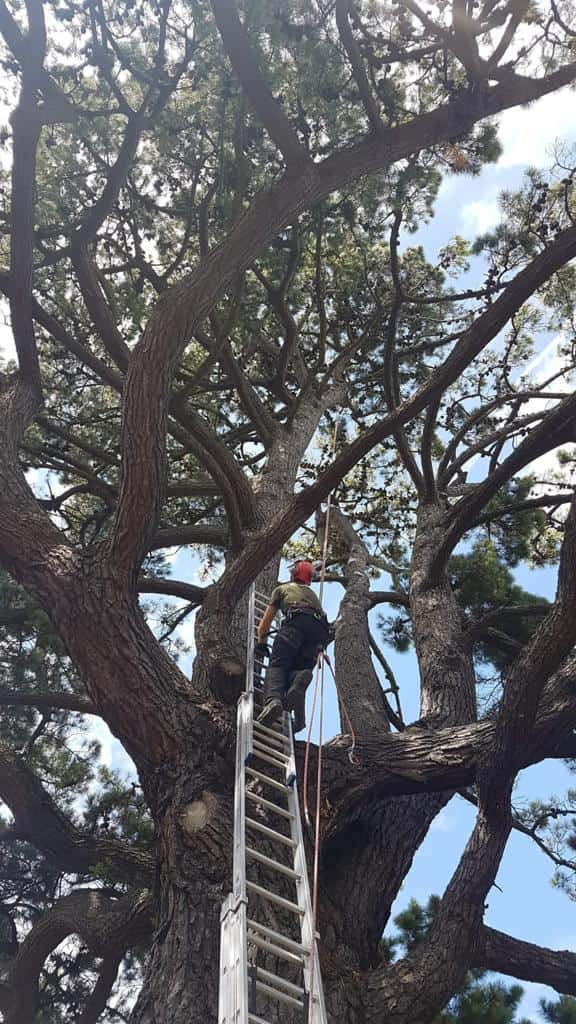Pruning is one of the most beneficial maintenance practices for trees when carried out correctly. It helps shape growth, remove diseased or dead wood, and improve overall tree health. However, pruning also places stress on a tree, and ensuring a smooth recovery afterwards is essential to maintain its strength and vitality. For homeowners and property managers in Chichester, West Sussex, LM Tree Surgery Chichester provides professional pruning and post-care services designed to help trees thrive long after the work is completed.
Understanding the Impact of Pruning
When branches are cut, trees naturally respond by redirecting energy to heal the wounds. Each cut represents an entry point for potential pests and disease, so precision and aftercare are key. The goal of good pruning is to promote healthy regrowth without overburdening the tree’s natural recovery process. A professional approach ensures that cuts are made in the right places and at the correct time of year to minimise stress.
Steps to Help Trees Recover After Pruning
1. Water Adequately
After pruning, trees need sufficient water to support new growth and healing. Keeping the soil consistently moist—but not waterlogged—encourages root health and nutrient absorption. During dry periods in Chichester, particularly in summer, a deep watering once or twice a week helps sustain the tree’s energy levels.
2. Avoid Over-Pruning
Removing too much foliage can shock a tree and reduce its ability to photosynthesise. As a general guideline, no more than 20–25% of the canopy should be removed during a single pruning session. LM Tree Surgery Chichester always follows professional pruning standards to protect the tree’s long-term health while achieving the desired results.
3. Mulch Around the Base
Mulching is an excellent way to conserve moisture, regulate soil temperature, and improve nutrient content. Apply a 5–8 cm layer of organic mulch, such as wood chips or compost, around the base of the tree, keeping it a few inches away from the trunk to prevent rot.
4. Monitor for Signs of Stress
After pruning, it’s important to keep an eye on the tree for any changes that might indicate distress. Look for:
- Yellowing or wilting leaves
- Excessive leaf drop
- Dead or brittle branches
- Fungal growth on the bark
If any of these symptoms appear, it may suggest that the tree is struggling to recover. Early intervention from LM Tree Surgery Chichester can help identify and correct the problem before it worsens.
5. Apply Nutrients if Necessary
A slow-release, balanced fertiliser can support regrowth, especially for trees growing in poor soil. However, over-fertilising can cause more harm than good. The best approach is to have your soil assessed before adding supplements to ensure the right nutrients are applied.
6. Protect from Mechanical Damage
Freshly pruned trees are more vulnerable to physical harm. Avoid leaning ladders, garden equipment, or heavy objects against the trunk. Also, take care when mowing or trimming grass nearby to prevent bark injuries that can delay healing.
7. Time Pruning Correctly
Timing plays a big role in how well trees recover. For most species, pruning in late winter or early spring encourages vigorous new growth, while summer pruning helps manage shape and slow excessive growth. LM Tree Surgery Chichester can advise on the ideal schedule depending on your specific tree type and local conditions in West Sussex.
The Role of Professional Tree Care
Tree recovery after pruning is not just about what happens immediately afterwards — it’s about the long-term management of health and structure. Professional arborists have the knowledge and equipment to make precise cuts that encourage strong wound closure and minimise decay. They also understand the growth patterns of different species, ensuring that pruning enhances rather than weakens the tree.
At LM Tree Surgery Chichester, every pruning project is carried out with the goal of maintaining the tree’s balance, structure, and natural beauty. Our team provides aftercare advice and maintenance support to ensure that your trees remain in top condition throughout every season.
Why Proper Recovery Matters
Healthy recovery from pruning promotes stronger root systems, fuller canopies, and improved resistance to pests and disease. Trees that are well cared for after pruning continue to thrive, adding value, beauty, and environmental benefits to your property in Chichester. Neglecting aftercare, on the other hand, can lead to slow healing, decay, or stunted growth — issues that are far more difficult and costly to resolve later on.
Conclusion
Pruning is a vital part of maintaining strong, healthy trees — but what happens afterwards is just as important. With the right care, your trees will recover quickly, producing vigorous new growth and maintaining their natural resilience. For expert pruning and post-care advice in Chichester, West Sussex, trust LM Tree Surgery Chichester to ensure your trees recover well and continue to flourish year after year. Professional attention today helps secure the long-term health and beauty of your landscape.
Call us on: 01243 974 685
Click here to find out more about LM Tree Surgery Chichester
Click here to complete our contact form and see how we can help with your trees needs.

